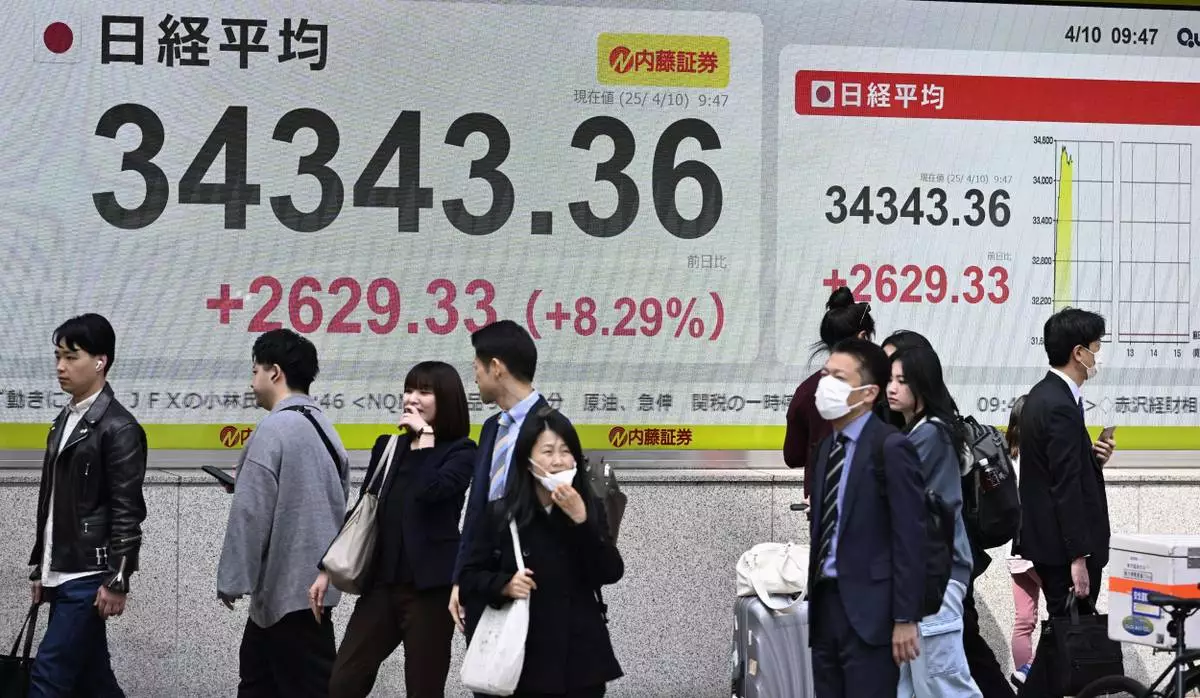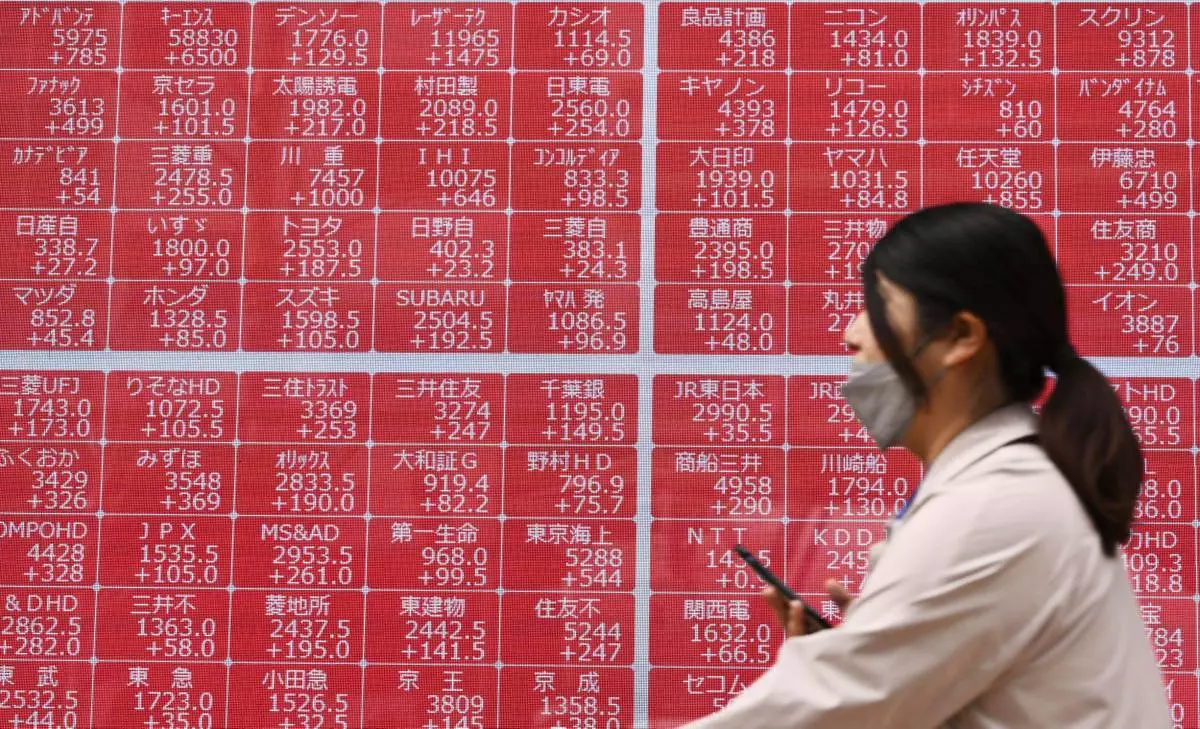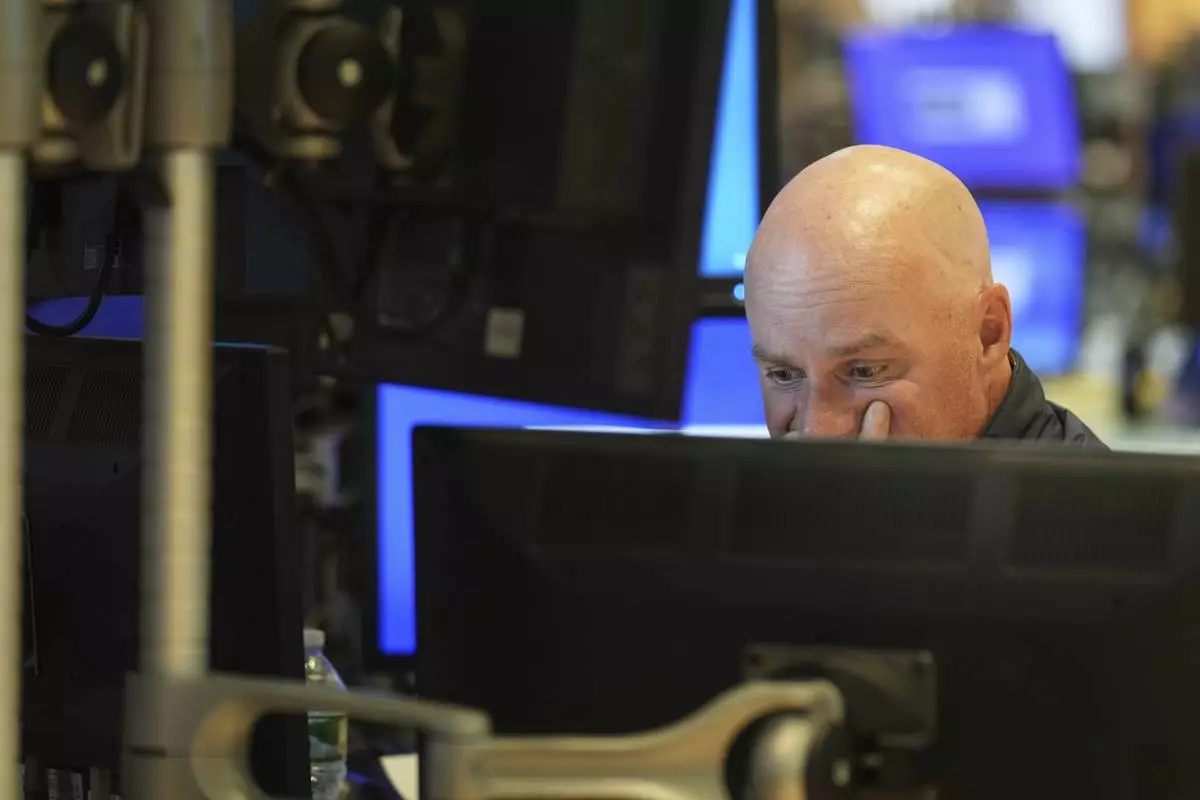PARIS (AP) — U.S. government efforts to eliminate diversity initiatives are not going down well on the European continent.
Laurent Saint-Martin, France's minister for foreign trade, said on Monday the country won't compromise after the U.S. State Department said that French companies who have contracts with the U.S. government need to drop diversity, equity and inclusion initiatives. In neighboring Belgium, where some companies received similar requests, the government lashed out at the new U.S. rules.
French media reported last week that French companies received a letter saying U.S. President Donald Trump’s rollback of DEI initiatives also could apply outside of the U.S.
Saint-Martin spoke to RTL Radio following the reports and said French authorities will seek explanations from their U.S. counterparts about the letter.
The reported demands included abandoning inclusion policies that are part of French and European Union laws such as equality between men and women, the fight against discrimination and racism or the promotion of diversity to help people with disabilities, he said.
“All of this is progress that corresponds first and foremost to our French values, we are proud of this and we don’t want to compromise on it,” Saint-Martin said. “We can’t just cancel the application of our own laws overnight.”
French media said the letter was signed by an officer of the U.S. State Department who is on the staff at the U.S. Embassy in Paris. The embassy didn’t respond to questions from The Associated Press.
State Department spokeswoman Tammy Bruce, speaking to reporters at a briefing in Washington, confirmed that letters were sent.
“This is an effort to comply with the executive order from the president and it is essentially a self-certifying statement to local consulates and embassies," she said.
Le Figaro daily newspaper published what it said was a copy of the letter. The document said an executive order that Trump signed in January terminating DEI programs within the federal government also “applies to all suppliers and service providers of the U.S. Government, regardless of their nationality and the country in which they operate.”
The document asked U.S. government contractors to complete, sign and return within five days a separate certification form to demonstrate that they are in compliance.
Saint-Martin said he was “deeply shocked” but insisted on the need to have a “positive agenda” and maintain a dialogue with the U.S.
In Belgium, Finance Minister Jan Jambon said Europeans have a “culture of “non-discrimination” that must be continued. “We have no lessons to learn from the boss of America,” he told channel RTL-TVi.
In a joint statement quoted by local media, Foreign Minister Maxime Prévot and Equal Opportunities Minister Rob Beenders regretted the "step backward” taken by the U.S.
“Diversity and inclusion are not just buzzwords, but the foundations of a strong and dynamic society,” they said. “They strengthen our economy, foster innovation and allow talent to flourish.”
In Spain, Barcelona’s mayor said last week that his municipal government will defy Trump’s attack on DEI initiatives that have included a cultural program hosted by the city.
Trump issued the executive order to roll back the programs with federal funding, including those receiving U.S. government aid abroad.
The Barcelona-based program is one of 700 “American Spaces” located in 140 countries. They offer English-language and other courses to adults and children, information and materials about the U.S. and counseling for foreign students hoping to enroll at U.S. schools and universities.

FILE - People stroll Friday, March 21, 2025 in La Defense business district outside Paris. (AP Photo/Thomas Padilla, file)
TOKYO (AP) — Asian shares surged in Thursday trading, with Japan’s benchmark jumping more than 2,000 points almost immediately after the Tokyo exchange opened, as investors welcomed President Donald Trump ’s decision to back off on most of his tariffs.
Analysts had expected the regional comeback given that U.S. stocks had one of their best days in history Wednesday on a euphoric Wall Street, where investor hopes had run high that Trump would tone down the tariffs.
On Thursday, Japan’s benchmark Nikkei 225 jumped 8.2% in morning trading to 34,302.05, zooming upward as soon as trading began. Australia’s S&P/ASX 200 soared 4.7% to 7,721.40. South Korea’s Kospi gained 4.9% to 7,721.40. Hong Kong's Hang Seng added 2.8% to 20,821.48. The Shanghai Composite edged up 0.6% to 3,207.35.
Stephen Innes, managing partner at SPI Asset Management, called the reaction “from fear to euphoria.”
“It’s now a manageable risk, especially as global recession tail bets get unwound, and most of Asia’s exporters breathe a massive sigh of relief,” he said, referring to the tariffs on China, which Trump has kept.
On Wall Street, the S&P 500 surged 9.5%, an amount that would count as a good year for the market. It had been sinking earlier in the day on worries that Trump’s trade war could drag the global economy into a recession. But then came the posting on social media that investors worldwide had been waiting and wishing for.
“I have authorized a 90 day PAUSE,” Trump said, after recognizing the more than 75 countries that he said have been negotiating on trade and had not retaliated against his latest increases in tariffs.
Treasury Secretary Scott Bessent later told reporters that Trump was pausing his so-called ‘reciprocal’ tariffs on most of the country’s biggest trading partners, but maintaining his 10% tariff on nearly all global imports.
China was a huge exception, though, with Trump saying tariffs are going up to 125% against its products. That raises the possibility of more swings ahead that could stun financial markets. The trade war is not over, and an escalating battle between the world’s two largest economies can create plenty of damage. U.S. stocks are also still below where they were just a week ago, when Trump announced worldwide tariffs on what he called “Liberation Day.”
But on Wednesday, at least, the focus on Wall Street was on the positive. The Dow Jones Industrial Average shot to a gain of 2,962 points, or 7.9%. The Nasdaq composite leaped 12.2%. The S&P 500 had its third-best day since 1940.
The relief came after doubts had crept in about whether Trump cared about the financial pain the U.S. stock market was taking because of his tariffs. The S&P 500, the index that sits at the center of many 401(k) accounts, came into the day nearly 19% below its record set less than two months ago.
That surprised many professional investors who had long thought that a president who used to crow about records for the Dow under his watch would pull back on policies if they sent markets reeling.
Wednesday’s rally pulled the S&P 500 index away from the edge of what’s called a “bear market.” That’s what professionals call it when a run-of-the-mill drop of 10% for U.S. stocks, which happens every year or so, graduates into a more vicious fall of 20%. The index is now down 11.2% from its record.
Wall Street also got a boost from a relatively smooth auction of U.S. Treasurys in the bond market Wednesday. Earlier jumps in Treasury yields had rattled the market, indicating increasing levels of stress. Trump himself said Wednesday that he had been watching the bond market “getting a little queasy.”
Analysts say several reasons could be behind the rise in yields, including hedge funds and other investors having to sell their Treasury bonds to raise cash in order to make up for losses in the stock market. Investors outside the United States may also be selling their U.S. Treasurys because of the trade war. Such actions would push down prices for Treasurys, which in turn would push up their yields.
Regardless of the reasons behind it, higher yields on Treasurys add pressure on the stock market and push upward on rates for mortgages and other loans for U.S. households and businesses.
The moves are particularly notable because U.S. Treasury yields have historically dropped — not risen — during scary times for the market because the bonds are usually seen as some of the safest possible investments. This week’s sharp rise had brought the yield on the 10-year Treasury back to where it was in late February.
After approaching 4.50% in the morning, the 10-year yield pulled back to 4.34% following Trump’s pause and the Treasury’s auction. That’s still up from 4.26% late Tuesday and from just 4.01% at the end of last week.
In energy trading, benchmark U.S. crude fell 56 cents to $61.79 a barrel. Brent crude, the international standard, declined 74 cents to $64.74 a barrel.
In currency trading, the U.S. dollar fell to 146.83 Japanese yen from 147.38 yen. The euro cost $1.0980, up from $1.0954.
AP Business Writer Stan Choe contributed.

People walk by an electronic board showing Japan's Nikkei 225 index at a securities firm in Tokyo Thursday, April 10, 2025. (Kyodo News via AP)

A person walks past an electronic stock board at a securities firm in Tokyo Thursday, April 10, 2025. (Kyodo News via AP)

A currency trader walks by the screens showing the Korea Composite Stock Price Index (KOSPI), left, and the foreign exchange rate between U.S. dollar and South Korean won at a foreign exchange dealing room in Seoul, South Korea, Thursday, April 10, 2025. (AP Photo/Lee Jin-man)

A currency trader watches computer monitors at a foreign exchange dealing room in Seoul, South Korea, Thursday, April 10, 2025. (AP Photo/Lee Jin-man)

A currency trader walks by the screens showing the Korea Composite Stock Price Index (KOSPI), left, the foreign exchange rate between U.S. dollar and South Korean won and the Korean Securities Dealers Automated Quotations (KOSDAQ) at a foreign exchange dealing room in Seoul, South Korea, Thursday, April 10, 2025. (AP Photo/Lee Jin-man)

A currency trader prepares to work near the screens showing the Korea Composite Stock Price Index (KOSPI) and the foreign exchange rate between U.S. dollar and South Korean won at a foreign exchange dealing room in Seoul, South Korea, Thursday, April 10, 2025. (AP Photo/Lee Jin-man)

A currency trader watches computer monitors near the screen showing the foreign exchange rate between U.S. dollar and South Korean won at a foreign exchange dealing room in Seoul, South Korea, Thursday, April 10, 2025. (AP Photo/Lee Jin-man)

President Donald Trump is displayed on a television on the floor at the New York Stock Exchange in New York, Wednesday, April 9, 2025. (AP Photo/Seth Wenig)

A traders works on the floor at the New York Stock Exchange in New York, Wednesday, April 9, 2025. (AP Photo/Seth Wenig)


























































